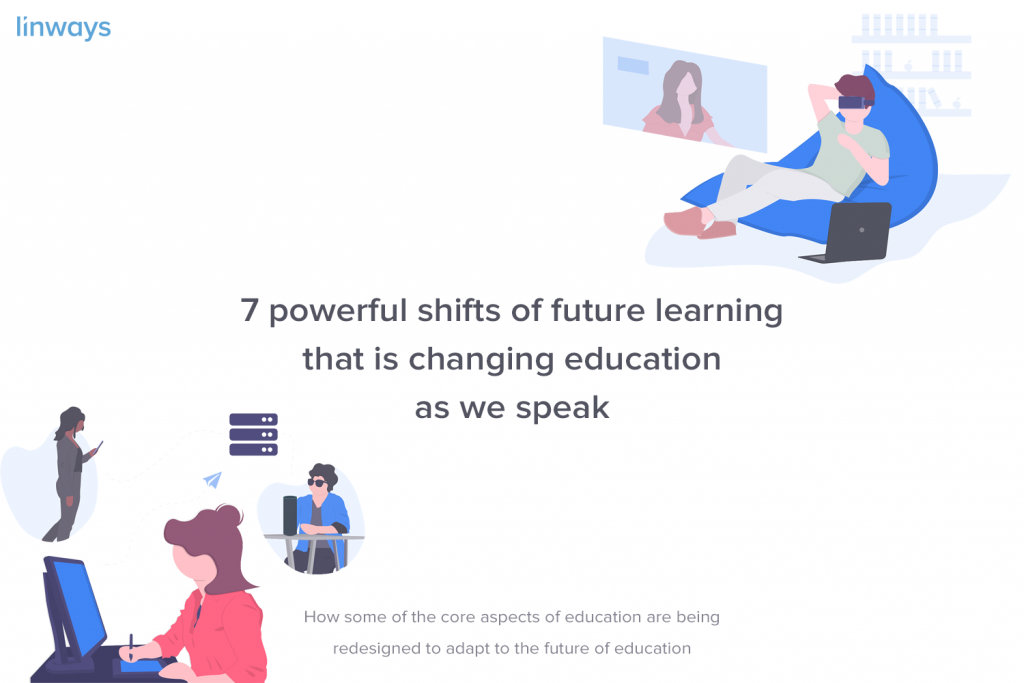Click here to check out the complete blog series on NAAC accreditation

Picking up from where we left off in our previous blog, the Internal Quality Assurance Cell (IQAC) will become a part of the institution’s system and work towards realization of the goals of quality enhancement and sustenance. The prime task of the IQAC is to develop a system for conscious, consistent and catalytic improvement in the overall performance of institutions. For this, during the post-accreditation period, it will channelize all efforts and measures of the institution towards promoting its holistic academic excellence.
The IQAC has to ensure that whatever is done in the institution for “education” is done efficiently and effectively with high standards. In order to do this, the IQAC will have to first establish practices and methodologies to collect data and information on various aspects of institutional functioning.
All the accredited institutions which have established the IQAC will submit a self-reviewed progress report annually to the NAAC, detailing the tangible results achieved in key areas which are specifically identified by the IQAC in the beginning of the academic year by devising a perspective plan. The Annual Quality Assurance Report (AQAR) is the outcome of the perspective plan of the IQAC.
A functional Internal Quality Assurance Cell (IQAC) and timely submission of Annual Quality Assurance Reports (AQARs) are the Minimum Institutional Requirements (MIR) to volunteer for second, third or subsequent cycle of accreditation. During the institutional visit, the NAAC’s peer team will interact with the IQAC to know the progress, functioning as well quality improvement initiatives undertaken by them.
Best practices
- Outcome based education (OBE).
Outcome Based Education (OBE) focuses on the skills and results achieved by the student as the most important aspect of education. Most quality assurance and accreditation practices are based on this methodology. OBE does not rely on the conventional teaching methods. It believes, instead of rankings and exams, the use of assessments, opportunities and classroom experiences should all provide necessary support for the students to achieve their goals. - Choice Based Credit System (CBCS).
Choice based credit system (CBCS), in the layman’s terms, is where the students can choose the prescribed courses, as the core, and elective or soft skill courses, from a range of options, rather than to simply consume what the curriculum offers. They can learn at their own pace and the assessments are graded based on a credit system. It provides an opportunity and flexibility to complete the programme by earning the required number of credits. - Student Centered Learning (SCL).
Student-centered instruction [SCI] is an instructional approach in which students influence the content, activities, materials, and pace of learning. This learning model places the student (learner) in the center of the learning process. The SCI approach includes such techniques as substituting active learning experiences for lectures, assigning open-ended problems and problems requiring critical or creative thinking that cannot be solved by following text examples, involving students in simulations and role plays, and using self-paced and/or cooperative (team-based) learning. Properly implemented SCI can lead to increased motivation to learn, greater retention of knowledge, deeper understanding, and more positive attitudes towards the subject being taught. - IQAC newsletter to increase participation of the stakeholders.
To improve the extent of participation of all stakeholders, the IQAC can publish institutional newsletter describing the outcomes, quality improvement practices, the future plans of IQAC etc. this will keep the stakeholders informed, and would encourage them to put in more effort for improving the quality. - Industrial visits (IV) and Collaborations with NGOs and MoUs with industries for training.
These practices are already a part of many technical programs. Providing the students an inside experience of the industry gives the enough knowledge and equips them with the skill set that will help them survive in the real world. This increases the credibility of the program. - Research and development cell.
A properly functioning research and development cell will build a research culture among the students and faculties. It will also help the teachers to translate their theoretical knowledge into action. Having a culture of research and training inside the institution would provide practical skills and encourage faculties to take up research and higher studies such as M.Phil and Ph.Ds. - Continuous feedback from various stakeholders.
Collecting feedback is very important. One of the most efficient way to achieve continuous improvement is through collecting feedback. The feedback from students, faculties, alumni, and other stakeholders will give necessary insights into the blind spots and pain points which would otherwise be hard to find. Also, it is a great way to make those stakeholders participate in the development of the institution because by that way, the IQAC can then understand what they actually want and start working in the right direction. - Collaborating the practices of IQAC with departmental plans.
The IQAC regularly interacting with the departments would help align their interests. Planning and implementation can be done hand-in-hand, and the active participation of the faculties and HoDs provides a deeper understanding in pursuing quality. The IQAC can suggest activities while planning the departmental curriculum to ensure proper quality and attainment of outcomes.
These are all for reference, and are meant as examples. The institution and the IQAC can build their own plans and practices for quality assurance.
We will discuss more on quality assurance and NAAC accreditation practices in our coming blogs.




